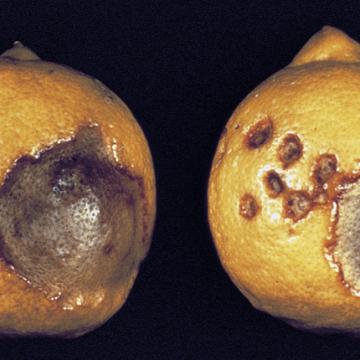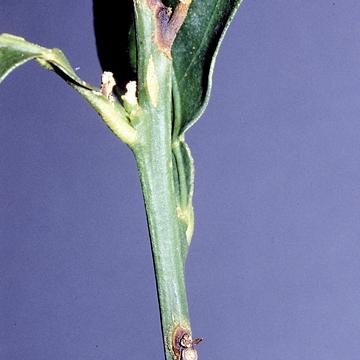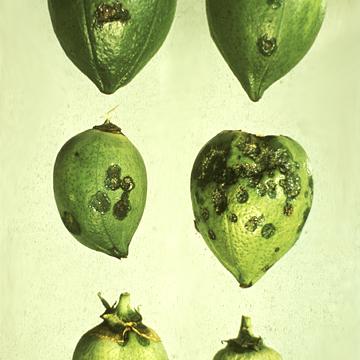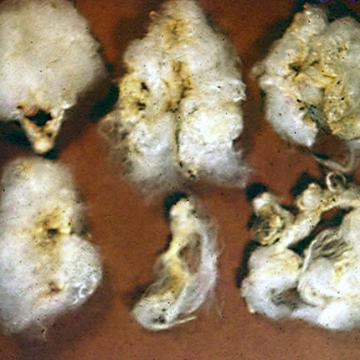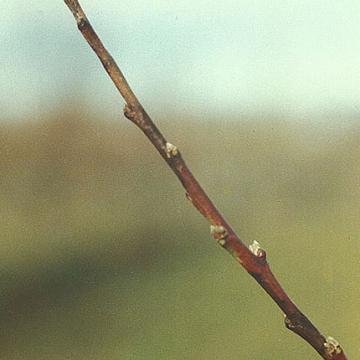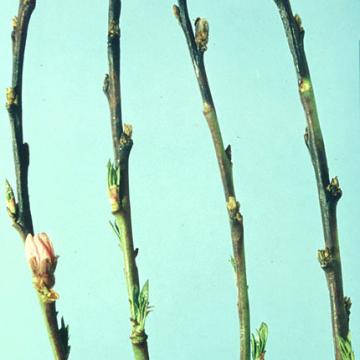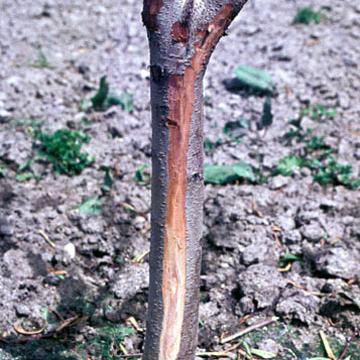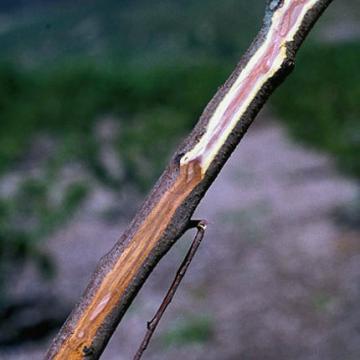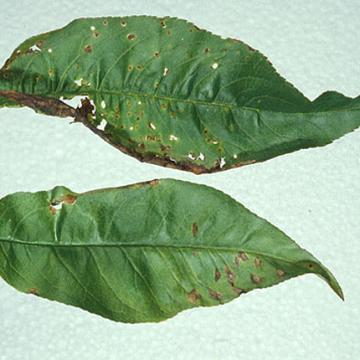DISEASE: Bacterial blast and black pit
HOST: Citrus (Lemon)
The term "black pit" refers to black lesions on fruit, which may be specks or large, sunken pits as seen here. They also may be light tan, later becoming reddish brown to black.
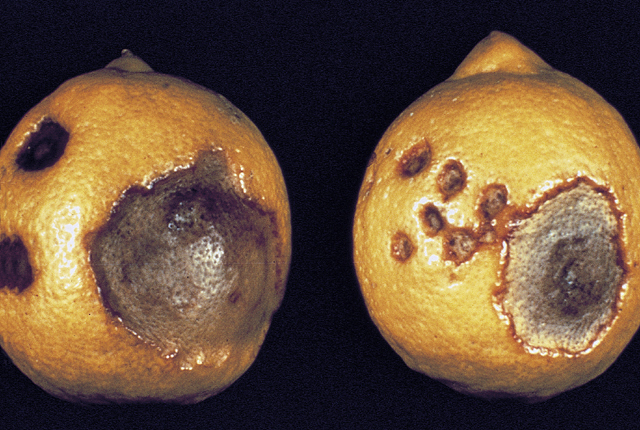
Bacterial blast and black pit | Citrus (Lemon)
DISEASE: Bacterial blast and black pit
HOST: Citrus (Lemon) (Citrus limon)
PATHOGEN: Pseudomonas syringae pv. syringae
SOURCE: J. Menge
DISEASE: Bacterial blast and black pit
HOST: Citrus (Lime)
Characteristic symptoms of brownish black lesions on twigs and leaves (blast), starting with infection of petioles. Black pit refers to brown to black sunken spots on fruit, 5 to 20 mm in diameter.
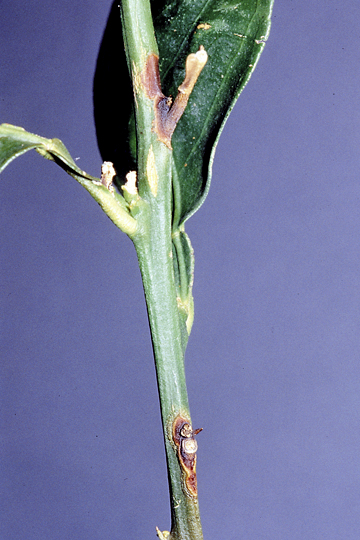
Bacterial blast and black pit | Citrus (Lime)
DISEASE: Bacterial blast and black pit
HOST: Citrus (Lime) (Citrus sp.)
PATHOGEN: Pseudomonas syringae pv. syringae
SOURCE: P. Broadbent
DISEASE: Bacterial blight (Boll rot)
HOST: Cotton
Boll rot first appears as raised, water-soaked lesions, which become sunken and turn brown to black with time.
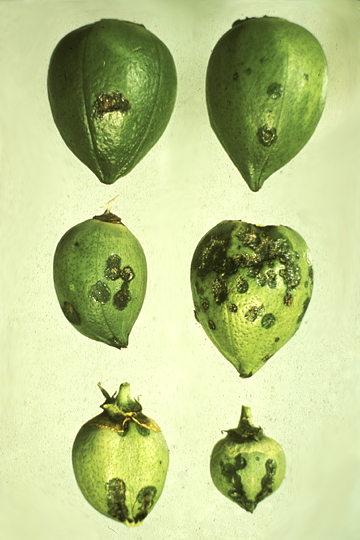
Bacterial blight (Boll rot) | Cotton
DISEASE: Bacterial blight (Boll rot)
HOST: Cotton (Gossypium barbadense)
PATHOGEN: Xanthomonas citri subsp. malvacearum
PATHOGEN SYNONYM: Xanthomonas campestris pv. malvacearum
SOURCE: A. Hayward
DISEASE: Bacterial blight (Boll rot)
HOST: Cotton
Infection of bolls causes premature opening and increased susceptibility to secondary, saprophytic microorganisms that cause rot. Note discolored cotton.
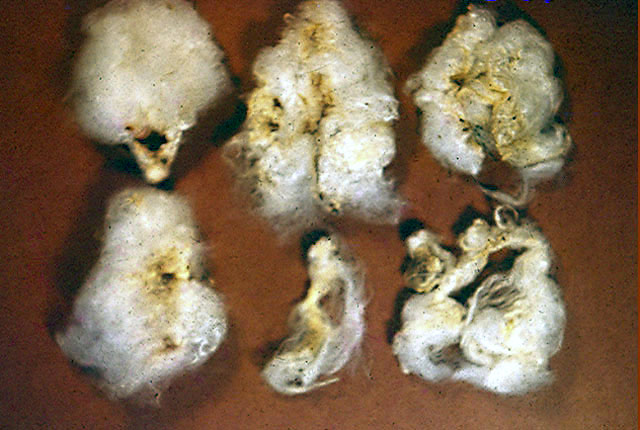
Bacterial blight (Boll rot) | Cotton
DISEASE: Bacterial blight (Boll rot)
HOST: Cotton (Gossypium barbadense)
PATHOGEN: Xanthomonas citri subsp. malvacearum
PATHOGEN SYNONYM: Xanthomonas campestris pv. malvacearum
SOURCE: APS
DISEASE: Bacterial dieback of nectarine
HOST: Nectarine
Dark cankers on last year's twig. Symptoms of bacterial dieback of nectarine are identical to those of bacterial dieback of peach.
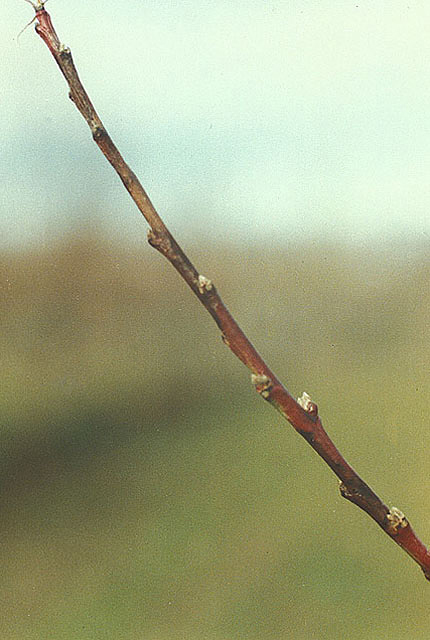
Bacterial dieback of nectarine | Nectarine
DISEASE: Bacterial dieback of nectarine
HOST: Nectarine (Prunus persica var. nucipersica)
PATHOGEN: Pseudomonas syringae pv. persicae
SOURCE: J. Young
DISEASE: Bacterial dieback of nectarine
HOST: Nectarine
Diseased young twigs.
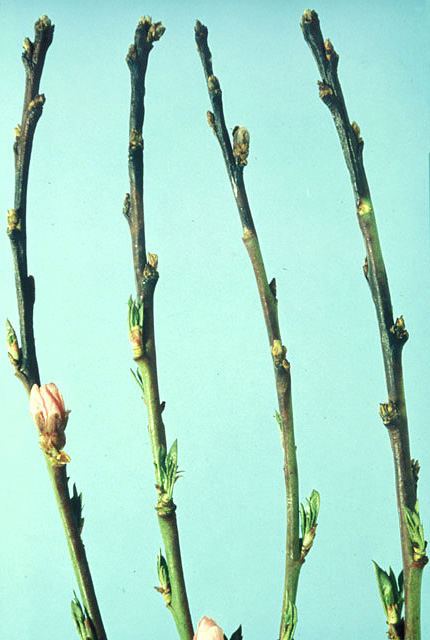
Bacterial dieback of nectarine | Nectarine
DISEASE: Bacterial dieback of nectarine
HOST: Nectarine (Prunus persica var. nucipersica)
PATHOGEN: Pseudomonas syringae pv. persicae
SOURCE: J. Young
DISEASE: Bacterial dieback of nectarine
HOST: Nectarine
Bacterial invasion of trunk caused reddish brown discolored area. Symptoms of bacterial dieback of nectarine are identical to those of bacterial dieback of peach.
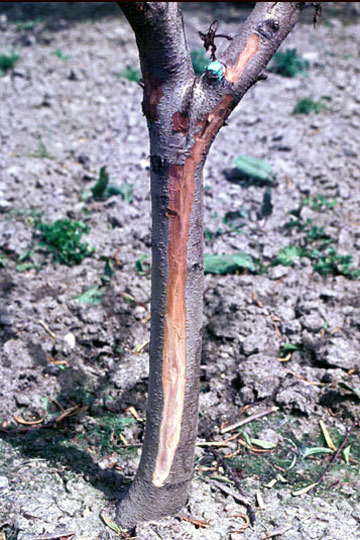
Bacterial dieback of nectarine | Nectarine
DISEASE: Bacterial dieback of nectarine
HOST: Nectarine (Prunus persica var. nucipersica)
PATHOGEN: Pseudomonas syringae pv. persicae
SOURCE: J. Young
DISEASE: Bacterial dieback of nectarine
HOST: Nectarine
Discolored vascular tissues and gummosis on infected twig.
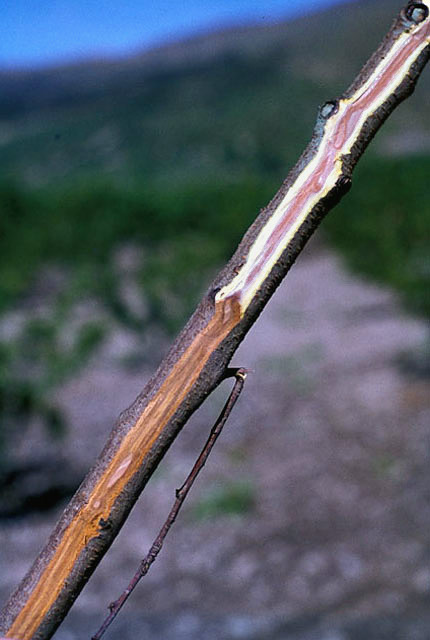
Bacterial dieback of nectarine | Nectarine
DISEASE: Bacterial dieback of nectarine
HOST: Nectarine (Prunus persica var. nucipersica)
PATHOGEN: Pseudomonas syringae pv. persicae
SOURCE: J. Young
DISEASE: Bacterial dieback of nectarine
HOST: Nectarine
Symptoms of the disease include leaf spots (top leaf). Similar appearing leaf spots may be caused by Xanthomonas arboricola pv. pruni (bottom leaf).
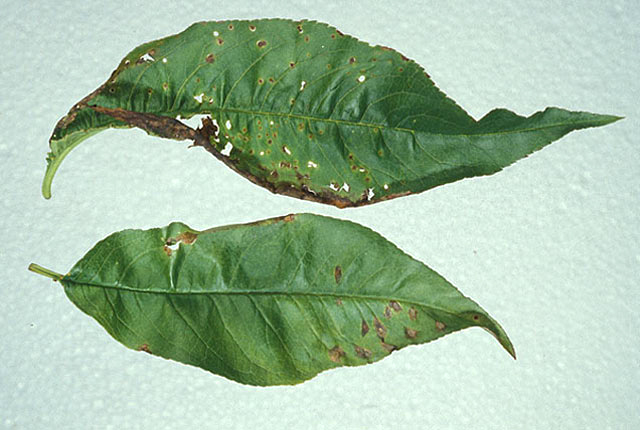
Bacterial dieback of nectarine | Nectarine
DISEASE: Bacterial dieback of nectarine
HOST: Nectarine (Prunus persica var. nucipersica)
PATHOGEN: Pseudomonas syringae pv. persicae
SOURCE: J. Young


